
Character of the week - Honoré Gabriel Riqueti, comte de Mirabeau
"Ah, but to administer is to govern, to govern is to reign. That is the essence of the problem."
―Mirabeau at the Tennis Court Oath, 1789.[src]
Honoré Gabriel Riqueti, comte de Mirabeau (1749 – 1791), better known as simply Mirabeau, was a French statesman and author, as well as a leader of the French Revolution during its early stages. Spending many years in and out of prison, he became a skilled orator and noted See More critic of France's arbitrary justice system.
In 1789, he was elected a deputy for the Third Estate at the Estates-General, where he became a leading figure in the National Assembly and aided in the writing of a constitution. As the revolution broke out, Mirabeau was determined to keep it peaceful, wishing for a constitutional monarchy similar to that in Great Britain. He became a secret advisor to King Louis XVI and had several old debts paid off while scheming to ensure that the monarchy would never be overthrown.
Unknown to historians, Mirabeau was also the Mentor of the French Brotherhood of Assassins, who sought to establish peace with the Parisian Rite of the Templar Order and its Grand Master, François de la Serre in the early days of the revolution. After a coup within the Templar Order, he was forced to give up on the truce, until the Grand Master's daughter, Élise de la Serre, offered to work with the Assassins in 1791. Unlike most of the Assassin Council, he was eager to accept this offer. Regarding Mirabeau as a traitor to the Brotherhood, council member Pierre Bellec poisoned him.
After his death, Mirabeau's dealings with the king were discovered, and public opinion turned against him, leading to his remains being moved away from the Panthéon. Viewed as a complex man who is not easily understood, historians disagree on whether he was a great leader who might have prevented the Reign of Terror, an opportunistic demagogue or a traitor to the revolution.
"Ah, but to administer is to govern, to govern is to reign. That is the essence of the problem."
―Mirabeau at the Tennis Court Oath, 1789.[src]
Honoré Gabriel Riqueti, comte de Mirabeau (1749 – 1791), better known as simply Mirabeau, was a French statesman and author, as well as a leader of the French Revolution during its early stages. Spending many years in and out of prison, he became a skilled orator and noted See More critic of France's arbitrary justice system.
In 1789, he was elected a deputy for the Third Estate at the Estates-General, where he became a leading figure in the National Assembly and aided in the writing of a constitution. As the revolution broke out, Mirabeau was determined to keep it peaceful, wishing for a constitutional monarchy similar to that in Great Britain. He became a secret advisor to King Louis XVI and had several old debts paid off while scheming to ensure that the monarchy would never be overthrown.
Unknown to historians, Mirabeau was also the Mentor of the French Brotherhood of Assassins, who sought to establish peace with the Parisian Rite of the Templar Order and its Grand Master, François de la Serre in the early days of the revolution. After a coup within the Templar Order, he was forced to give up on the truce, until the Grand Master's daughter, Élise de la Serre, offered to work with the Assassins in 1791. Unlike most of the Assassin Council, he was eager to accept this offer. Regarding Mirabeau as a traitor to the Brotherhood, council member Pierre Bellec poisoned him.
After his death, Mirabeau's dealings with the king were discovered, and public opinion turned against him, leading to his remains being moved away from the Panthéon. Viewed as a complex man who is not easily understood, historians disagree on whether he was a great leader who might have prevented the Reign of Terror, an opportunistic demagogue or a traitor to the revolution.
on November 27, 2015

Hagia Sophia Trivia:
The achievement "Spider Assassin" could be earned by climbing the Hagia Sophia from its base to the pinnacle in under 25 seconds.
One of Ishak Pasha's memoir pages was located on the pinnacle of the landmark.
The Hagia Sophia was a purchasable landmark in Constantinople, for the price of 60,400 Akçe.
In reality, Hagia Sophia only had two minarets in 1511. Darby McDevitt explained that the landmark's representation having four minarets "was the iconic image See More of the Hagia Sofia" and had to be in the game.
The interior of the Hagia Sophia appeared much larger than the entire structure itself when standing outside the building
The achievement "Spider Assassin" could be earned by climbing the Hagia Sophia from its base to the pinnacle in under 25 seconds.
One of Ishak Pasha's memoir pages was located on the pinnacle of the landmark.
The Hagia Sophia was a purchasable landmark in Constantinople, for the price of 60,400 Akçe.
In reality, Hagia Sophia only had two minarets in 1511. Darby McDevitt explained that the landmark's representation having four minarets "was the iconic image See More of the Hagia Sofia" and had to be in the game.
The interior of the Hagia Sophia appeared much larger than the entire structure itself when standing outside the building
on November 23, 2015

Landmark of the week - Hagia Sophia (AC R)
The Hagia Sophia, otherwise known as the Sancta Sophia or the Church of Holy Wisdom, was a former Eastern-Orthodox Christian basilica located in the Imperial District of Constantinople. Following the fall of the city in 1453 to Ottoman hands, it was converted into an Islamic mosque by Mehmet II, where it was also used as a library.
Designed by the Byzantine Greek scientists Isidore of Miletus and Anthemius of Tralles, Hagia Sophia was See More completed by the order of the Roman Emperor Justinian at the year 537, where it served as the imperial, patriarchal cathedral. This continued until 1453, where after the fall of Constantinople to the Ottoman forces of Sultan Mehmet II, it was converted into an imperial mosque shortly after.
Half a century later, in the year 1510, the Janissary Murat Bin Husn concealed the armor of Ishak Pasha inside the Hagia Sophia. The following year, Ezio Auditore da Firenze recovered Ishak Pasha's scattered memoirs and entered the mosque, where within minutes, he had climbed to the ceiling of the dome and activated an entrance to the armor's storage room, before taking the set back to the Galata headquarters.
While locating the second Masyaf Key, Ezio climbed one of the Hagia Sophia's minarets, where he used his Eagle Sense to locate a book on one of the landmark's rooftops.
Also in 1511, Sofia Sartor requested some white tulips from Ezio, and, after he tracked a florist to the Hagia Sophia, he learned that he could find some of the flowers in the courtyard. Following this, he also discovered that Sofia had prepared a picnic in the shadow of the great mosque, before he handed the bouquet he had picked with his Hidden Blade over to her.
The Hagia Sophia, otherwise known as the Sancta Sophia or the Church of Holy Wisdom, was a former Eastern-Orthodox Christian basilica located in the Imperial District of Constantinople. Following the fall of the city in 1453 to Ottoman hands, it was converted into an Islamic mosque by Mehmet II, where it was also used as a library.
Designed by the Byzantine Greek scientists Isidore of Miletus and Anthemius of Tralles, Hagia Sophia was See More completed by the order of the Roman Emperor Justinian at the year 537, where it served as the imperial, patriarchal cathedral. This continued until 1453, where after the fall of Constantinople to the Ottoman forces of Sultan Mehmet II, it was converted into an imperial mosque shortly after.
Half a century later, in the year 1510, the Janissary Murat Bin Husn concealed the armor of Ishak Pasha inside the Hagia Sophia. The following year, Ezio Auditore da Firenze recovered Ishak Pasha's scattered memoirs and entered the mosque, where within minutes, he had climbed to the ceiling of the dome and activated an entrance to the armor's storage room, before taking the set back to the Galata headquarters.
While locating the second Masyaf Key, Ezio climbed one of the Hagia Sophia's minarets, where he used his Eagle Sense to locate a book on one of the landmark's rooftops.
Also in 1511, Sofia Sartor requested some white tulips from Ezio, and, after he tracked a florist to the Hagia Sophia, he learned that he could find some of the flowers in the courtyard. Following this, he also discovered that Sofia had prepared a picnic in the shadow of the great mosque, before he handed the bouquet he had picked with his Hidden Blade over to her.
on November 23, 2015

on November 17, 2015

ILikeAssassinsCreed
created a
personality
quiz
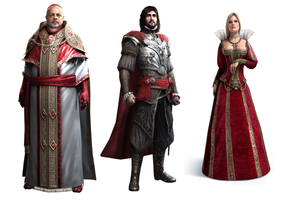
Ultimate <<Which templar are you?>>Assassin's Creed quiz 2015
on November 17, 2015

ILikeAssassinsCreed created a poll

Assassin's Creed what's next? What would you like to see next in Assassin's Creed?
on November 17, 2015

on November 17, 2015

ILikeAssassinsCreed
created a
personality
quiz

Ultimate <<Which assassin are you?>> Assassin's Creed quiz 2015
on November 17, 2015

ILikeAssassinsCreed
created a
scored
quiz
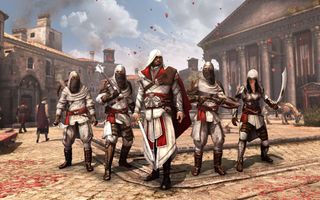
Ultimate quiz on Ezio - Assassin's Creed quiz
on November 16, 2015

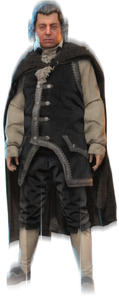

 Ultimate <<Which templar are you?>>Assassi...
Ultimate <<Which templar are you?>>Assassi...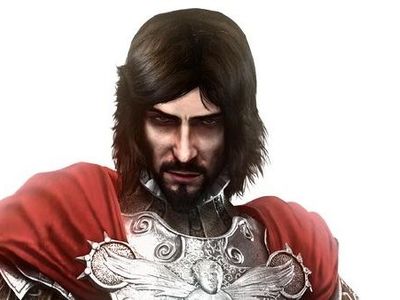
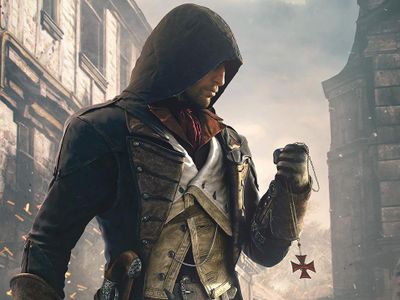

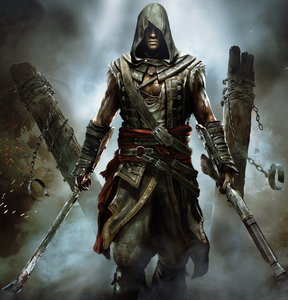

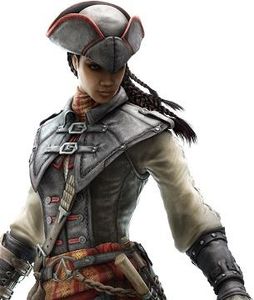

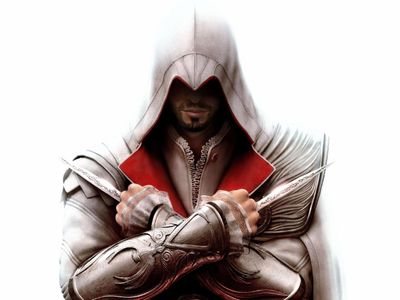
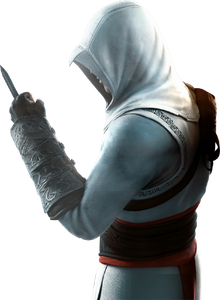
 Ultimate <<Which assassin are you?>> Assas...
Ultimate <<Which assassin are you?>> Assas...